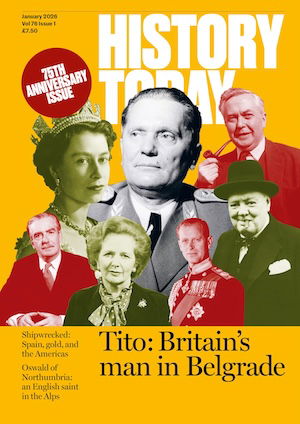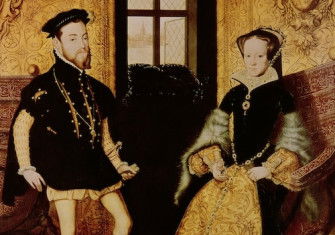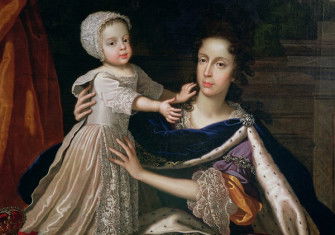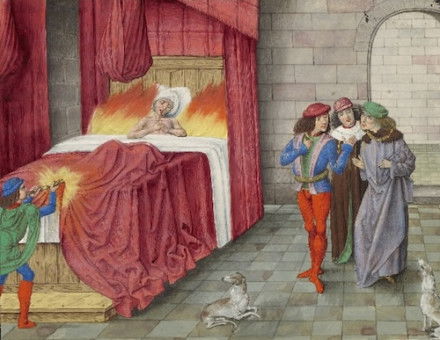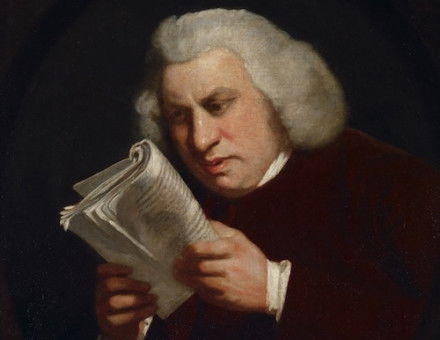‘The Graces’ by Breeze Barrington review
The Graces: The Extraordinary Untold Lives of Women at the Restoration Court by Breeze Barrington looks beyond the warming pan to the real Mary of Modena.

Queen Mary of Modena is usually remembered as the mother of a dubious heir. From the moment her pregnancy was announced in December 1687, mixed emotion swept through Britain. After several miscarriages and infant deaths, there was widespread joy over the prospect of a royal baby. Although Mary and James II and VII’s Catholic faith put them at odds with the majority of their subjects – and with Parliament – many people still believed in divine providence. If the king were to be blessed with a son, who would pip his Protestant sisters and facilitate a Catholic succession, it would be because God willed it. At the same time, mischief was afoot among anti-Catholic factions. As early as March 1688, James’ daughter (and Mary’s stepdaughter), Princess Anne, was casting aspersions on the pregnancy, informing her sister in Holland that ‘there may be foul play’. On the streets, pamphlets declared that the unborn child was not James’, but the papal nuncio’s.
The hysteria that followed the birth was unprecedented. While dozens of leading courtiers witnessed the arrival of James Edward Francis into the world on 10 June 1688, rumours swiftly erupted that the child was an imposter. One story claimed that Mary had birthed a girl who was then swapped for a boy; another that Mary had never been pregnant at all. The common explanation for the baby prince was that he had been smuggled into the birthing room via a warming pan, so that it merely appeared as though Mary had borne a son. In the vulnerable postpartum period, Mary had to recover from the birth amid stifling suspicion that she’d plotted to fake a son.
The entire saga has dominated the historical memory of Mary of Modena – and not without good reason. The ‘Warming Pan Baby Scandal’ sparked a series of events that led to the invasion of William of Orange, the exile of the Stuart royal family, and a century of Jacobite rebellions – in short, a revolution. But Breeze Barrington’s deftly researched, if lightly referenced, book offers a refreshing take on the life of Mary, or Maria of Modena as she is called throughout. Tracing Maria’s biography from her birth in Italy to her banishment to France, The Graces dwells on her multi-layered influence and activities. This much-needed retelling furnishes the general reader with a sharper understanding of Maria’s character and authority.
Born into the noble House of Este, Maria was four years old when her father died, making her two-year-old brother the duke of Modena. Under the auspices of her mother, regent Laura Martinozzi, Maria received an incredible education, not just for a girl but for any child in 17th-century Europe. By all accounts, that education was in step with her temperament. Thoughtful and diligent, Maria was soon nurturing a desire to join the convent attached to the Modena Palace, as her governess had recently done. Maria expected to spend the rest of her life in the seclusion of the Order of the Visitation of Holy Mary. But events abroad disrupted these plans. In faraway England, James (duke of York), brother to king Charles II and heir to the throne, was seeking a wife. For this mission, he dispatched Lord Peterborough to Europe who settled on the young, beautiful Maria as soon as he saw her portrait. Reluctantly, she agreed to the proposal and wed James by proxy in 1673. As Maria made her way to England, the turbulent seas mirrored the mood of her new homeland as James’ marriage to an Italian Catholic princess unsettled the nation. Despite the 24-year age gap James was a kind, although unfaithful, husband. Maria was pregnant within months of their first meeting.
Primed by her upbringing, Maria of Modena became a significant source of patronage in Restoration England. As Barrington demonstrates, Maria’s cultural influence was extensive. She received poems from John Dryden and Edmund Waller, and was painted by Peter Lely. Later, she tasked Benedetto Gennari with the redecoration of her Catholic chapel. She commissioned an extravagant production of the masque Calisto in early 1675 with verses by John Crowne and sets by Robert Streeter. In the 1680s, she formed a circle with two of her maids of honour, Anne Kingsmill and Anne Killigrew, and other elite women including Isabella Bennet and Sarah Churchill. Resisting the misogynist impulses of the court that regularly ridiculed women writers and artists, Maria’s circle carved out a space for translation, music, painting, and group reading. In 1684 Kingsmill and Killigrew showcased the fruits of that feminocentric community with a jointly authored masque, inspired by the story of Venus and Adonis, that was staged in Maria’s drawing room. In the absence of detailed source material, Barrington’s re-imaginings of Calisto and Venus and Adonis resurrect these entertainments. As the reader is immersed in the ‘general hush’ that falls over the small court and yields to opening chords that ‘are bright and regal, in the style of a French overture’, they are invited, likewise, to imagine the experience that the court masques entailed.
Maria’s coterie, dubbed ‘the Graces’, stood in opposition to the libertine salon established in 1676 by her controversial cousin, the Italo-French exile Hortense Mancini, a recurring presence in the book. Whereas Maria’s tight-knit circle focused on learned pursuits, Mancini’s salon mixed literary criticism and philosophical discussion with gambling and satirical performances. Still, these networks overlapped, pointing to the connections underpinning elite women’s intellectual activities in this era. Despite Maria and Mancini’s differing lifestyles, The Graces uncovers their shared investment in women’s learning, which transformed the cultural geography of 17th-century London. To misuse the words of Anthony à Wood, it was ‘a strange effeminate age’ when women’s cultural circles became the most vibrant hubs in the country. By the time of the Glorious Revolution, these communities had reshaped the nation’s artistic and culinary tastes, paving the way for the popularisation of salon sociability and, later, the Bluestockings, in the following decades.
- The Graces: The Extraordinary Untold Lives of Women at the Restoration Court
Breeze Barrington
Bloomsbury, 384pp, £25
Buy from bookshop.org (affiliate link)
Annalisa Nicholson is a Research Fellow in French at King’s College London and editor of Hortense Mancini’s letters (Iter Press, 2025).

